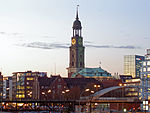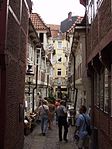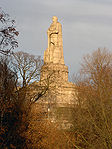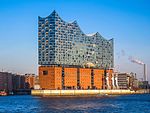Cap San Diego
1961 shipsHeritage sites in HamburgIMO numbersMMSI NumberMerchant ships ... and 3 more
Museum ships in GermanyMuseums in HamburgTourist attractions in Hamburg

MS Cap San Diego is a general cargo ship, situated as a museum ship in Hamburg, Germany. Notable for Her elegant silhouette, She was the last of a series of six ships known as the white swans of the South Atlantic, and marked the apex of German-built general cargo ships before the advent of the container ship and the decline of Germany's heavy industry.
Excerpt from the Wikipedia article Cap San Diego (License: CC BY-SA 3.0, Authors, Images).Cap San Diego
Überseebrücke, Hamburg Neustadt
Geographical coordinates (GPS) Address Phone number Website External links Nearby Places Show on map
Geographical coordinates (GPS)
| Latitude | Longitude |
|---|---|
| N 53.5431 ° | E 9.9763 ° |
Address
Cap San Diego
Überseebrücke
20459 Hamburg, Neustadt
Germany
Open on Google Maps







